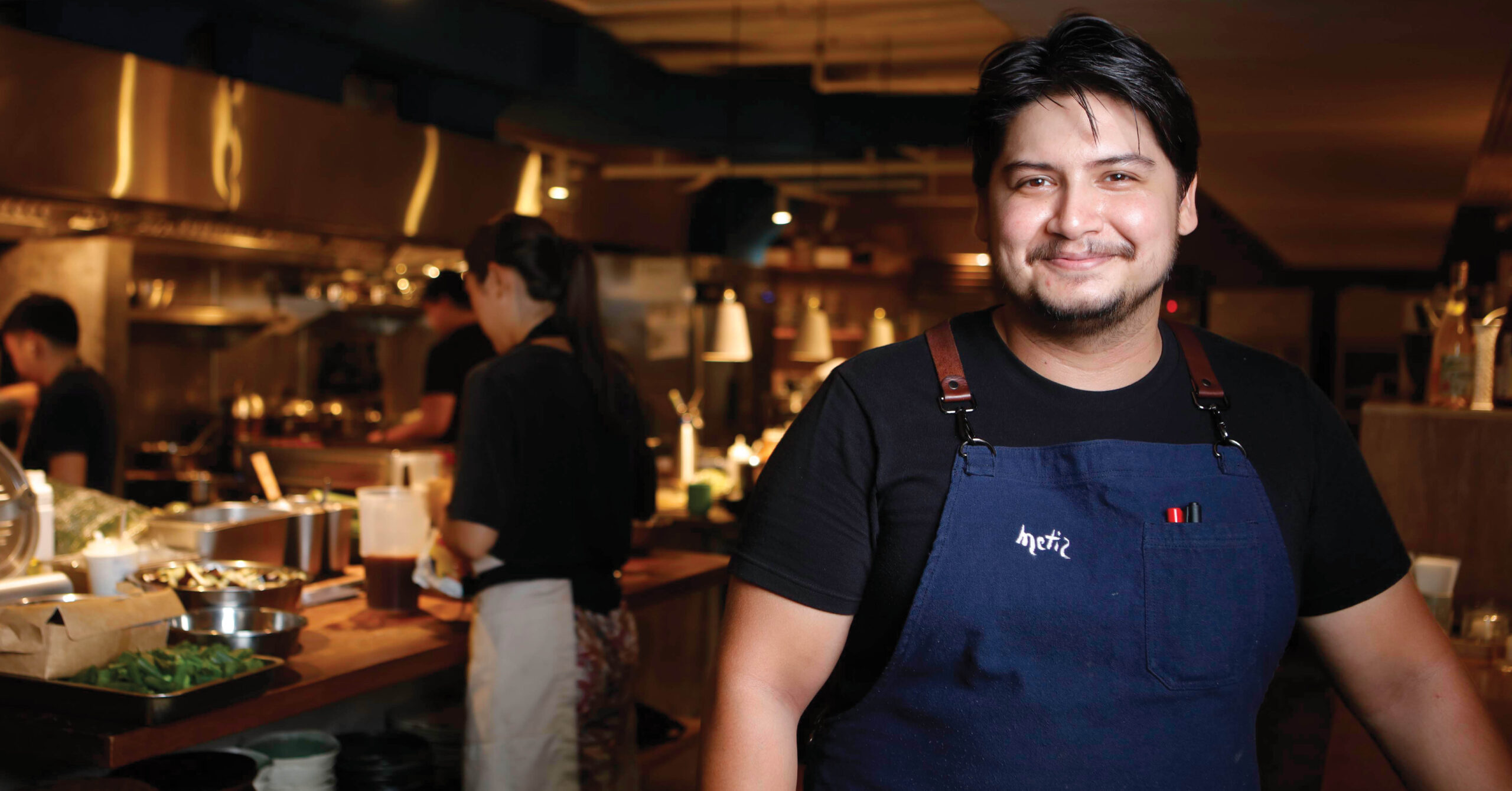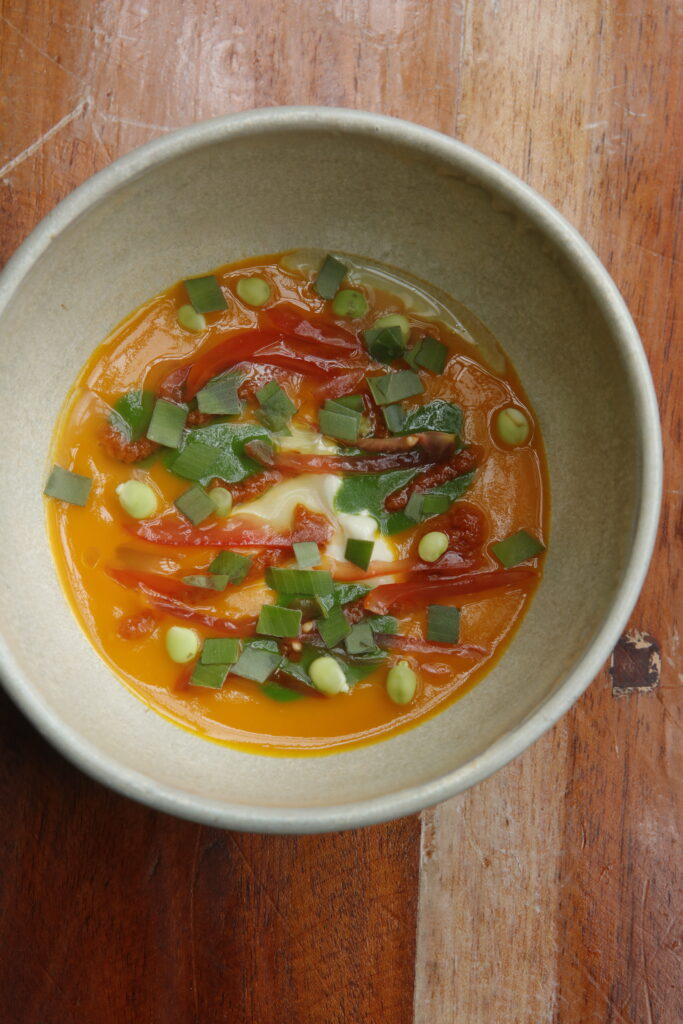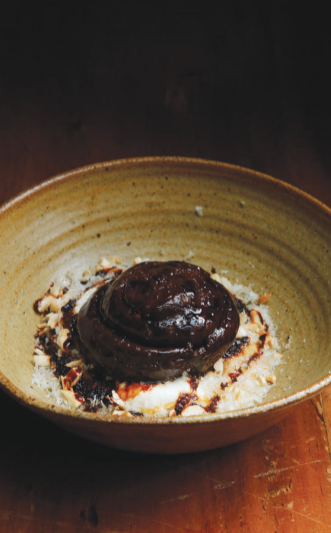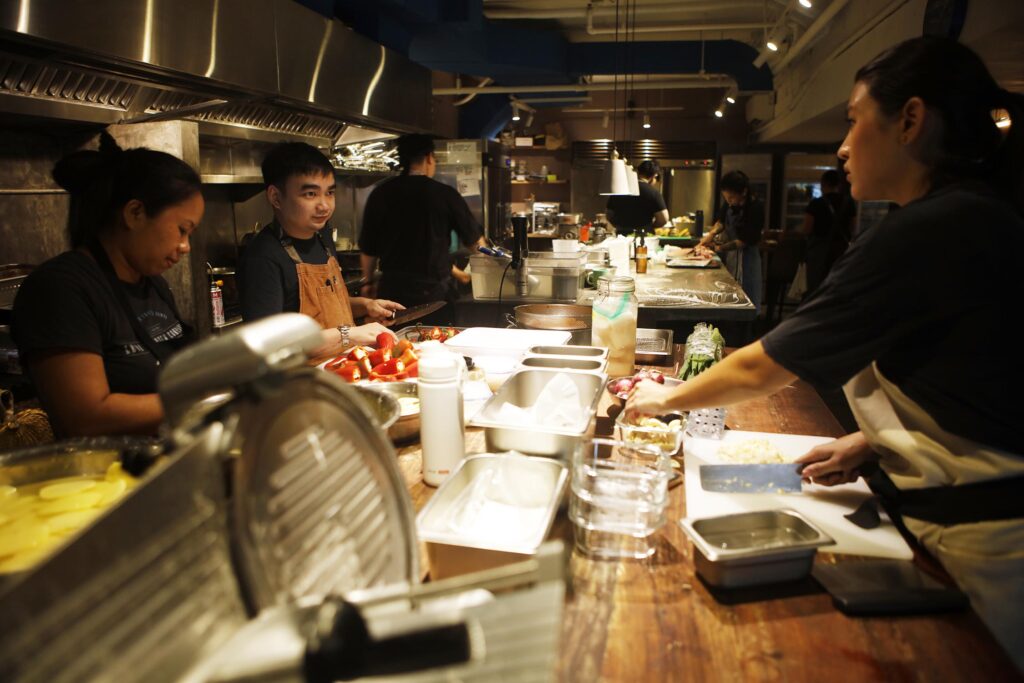Recently recognized as one of “Asia’s 50 Best Restaurants,” Metiz, according to Chef Stephan Duhesme, banks on great nuances, big contrasts and other characteristics that make Filipino food intrinsically delectable.
By ANJ SAMPAYAN
Photography by DIX PEREZ
Barely three years after opening its doors in a discreet corner of Pasong Tamo Extension in Makati City, Metiz, the brainchild of Filipino-French Chef Stephan Duhesme, has achieved a feat that many older, more established restaurants in the Philippines could probably only dream of.
“It’s cool to be part of Asia’s 50 Best Restaurants list. We were surprised that we made it. We never expected it. When we first heard the news, we were expecting somewhere from the 80th to the 90th, we would have been happy with that,” says the 34-year-old chef behind the award-winning restaurant. “Moreover, it’s a victory achieved through Filipino food and not through other cuisines. We got here while celebrating what we truly have — local ingredients, local flavors.”
Such conviction has been the guiding light of Metiz, whose name comes from the French word “métis,” which is French for “mestizo.”
This mestizo, however, couldn’t be prouder of his Filipino roots — and therein lies his secret ingredient. “Metiz was born out of an idea to explore what Filipino food could be. It was never solely about adobo, sinigang or kakanin, nor was it about rediscovering our traditions and classics. It’s about how we feel when we eat them,” he said in an Instagram post shortly after hearing the good news. “We strongly stand by the fact that Filipino cuisine doesn’t need any ‘elevating.’ The diverse ways in which we all prepare our food or the amount of distinct opinions on this matter just confirms the richness of our food culture. This is what we celebrate every day.”
Breaking into the top 50
Asia’s 50 Best Restaurants list is not an easy one to get into.
The annual roster is created by the Asia’s 50 Best Restaurants Academy, which is an influential group of over 300 leaders in the restaurant industry across the continent. Together, their votes serve as a “barometer of gastronomic trends as well as an unrivaled guide to the greatest dining destinations in Asia for food-loving travelers.”
In Metiz, these experts found a simple yet confident concept — a restaurant that could seat up to 30 guests, and whose eight-course, fixed-tasting menu, priced at P3,950 per head, celebrates the best Filipino dishes and ingredients. The menu, which changes three to four times a year, is carefully conceptualized and meticulously curated, while the 30-seat capacity is carefully maintained, so that “the quality of the food remains the same,” says Stephan.
For its current cycle, Metiz plays up its strengths by serving familiar Filipino ingredients and dishes in unfamiliar, surprising ways.
“We have a cool tart dish right now, something that I enjoy because it represents everything that Metiz is: gulay-centric (vegetable-centric) but with a little bit of that fermented or aged-cured seafood flavor. So it represents more like putting bagoong in your vegetables; I think we’ve captured that in a tart,” teases Stephan of his smoked tuyo with silk squash and mustard green.
A soup made of mung beans, squash and cherry tomatoes also reflects the duality of Stephan’s culinary vision. While the texture and feel of the dish may remind you of hummus, it also suddenly transports you to a backyard garden once the fresh flavors of cherry tomatoes and squash kick in.
There is also Metiz’s version of a rich and buttery ensaymada with Kalim-Aw kamote with tapuy reduction. The result is a caramelized dessert whose blackened syrup is as smoky as it is sweet, almost reminiscent of a cinnamon roll but still armed with the distinct flavors that make ensaymada a favorite among Filipinos.
Nuances and contrasts
While the menu changes regularly, the flavors that Metiz aspires to be known for do not. The restaurant, according to Metiz, banks on what Filipino food is all about. “I play on great nuances, big contrasts because I think that’s what Filipino food is. I’m not trying to ‘French-ify’ Filipino food; I’m not trying to ‘Europeanize’ it. I recognize Filipino food for what it is.”
Metiz takes pride in its ingenious use of produce and vegetables, further enhanced by chef’s expertise in fermenting different ingredients. Stephan adds that his interest in fermentation was something he got from his stepfather, award-winning and highly respected photographer Neal Oshima.
“The more we delve into Asian cuisine, the more we realize that we are surrounded by fermented food items. For example, we have a sawsawan [dipping sauce] that has suka [vinegar], patis [fish sauce], and soy sauce; it creates something fermented. People just do not realize that they eat so many fermented food items.”
He clarifies, though, that Metiz doesn’t focus on fermented food. “It’s just that Filipino food is fermentation-centric by nature. So you cannot do Filipino food without fermentation,” he says.
The “mestizo” behind Metiz
As mentioned earlier, the restaurant’s name is a phonetic of the French word for mestizo, which refers to a person of mixed heritage. It also aptly describes the country’s cuisine, a confluence of various cultures from neighboring countries. “It is a word that is not attached or bound by language, which gives us creative freedom,” says Stephan.
A Kedge Business School graduate-turned-chef, this natural food enthusiast grew up in a household whose members had an intense love affair with food. So when the time came for him to pursue his career, he found himself going around the globe, where he eventually found work at notable restaurants such as the Purple Yam in New York and Matsunozushi in Tokyo.
It wouldn’t take long before the then 25-year-old aspiring chef packed up his bags and took the leap by opening his first restaurant, Tria NeoBistro in Bogotá, Colombia — a country he barely knew. He was prodded by his stepbrother to take on an adventure of a lifetime by entering a joint venture. “At that time, I was 25. I was not married, had no kids, no girlfriend. So I was like, ‘Why not?’”
And while Tria did have its moments, Stephan’s brainchild eventually had to close down. With a grin, Stephan reminisces, “It was an exhilarating life experience but also full of naive, young, foolish decisions. It’s a business bound to fail. So it was kind of a self-discovery moment; you discover what you wanted, what you want to do. It was costly!”
But not everything was for naught. “I realized I simply enjoyed Filipino food. So when I came back home to the Philippines in 2018, I knew that I needed to cook and what I love,” Stephan says. “I learned from my mistakes in Tria. I was pitching to investors the idea of opening a restaurant with an open kitchen that is small, very curated and defined by local ingredients, in this case, Asian flavors. But since I’m back in Manila, I removed the Asian perspective and decided to celebrate Filipino cuisine.”
And, with that, one of Asia’s 50 best restaurants, was born.









